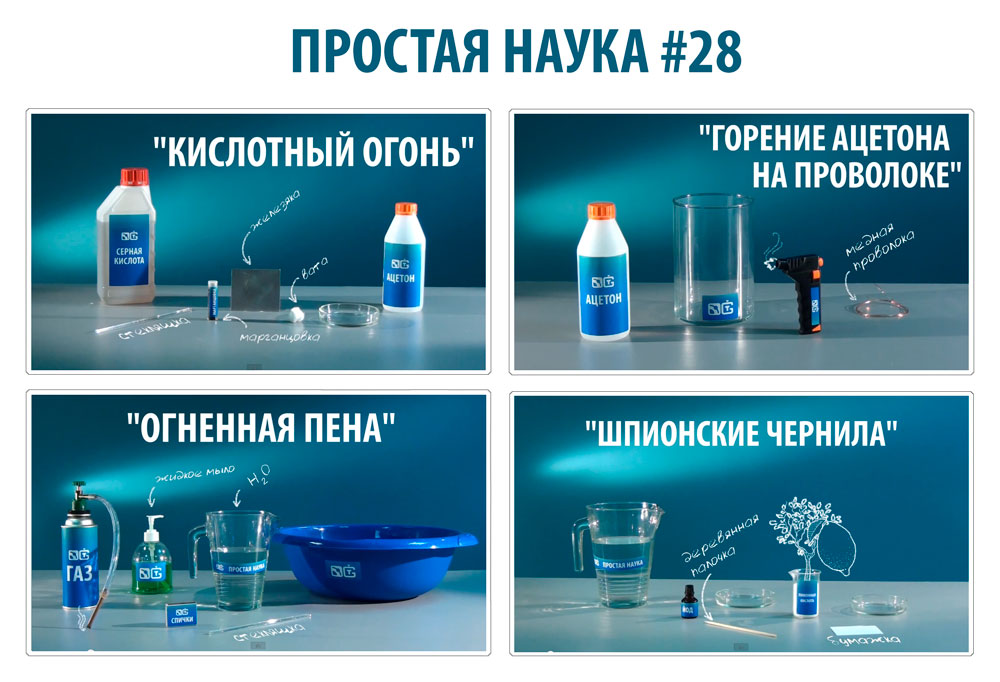Simple Science - Digest of Experiences # 28

We continue to produce experiments in an updated form with a more colorful design.
There are four chemical experiences in this release:
- acetone burning on the wire;
- fire foam;
- acid fire;
- spy ink
')
Acetone burning on wire
For the experience you will need: copper wire, acetone, glass vessel, gas burner.
To begin with, it is necessary to turn a dense spiral out of copper wire and heat it with a gas torch. In the meantime, pour a little acetone into the vessel, which immediately begins to evaporate. And we just need a pair of acetone.
When the heated copper wire is introduced into the vessel with vapors, catalytic oxidation of acetone begins to occur on the surface of the wire. As a result of this chemical reaction, a significant amount of heat is released. This heat is enough to heat up the copper wire red-hot.
Fire foam
For the experience you will need: a basin with water, liquid soap, a propane tank, matches.
The foam in the experiment is filled with natural gas. When a burning match is brought to the foam, part of the soap balls collapses (mainly due to thermal expansion of the gas in the balls), releasing the combustible gas to the outside. The gas immediately ignites, capturing all the foam. Since the foam itself consists of water, the heat released during the burning of methane goes to evaporation of water, and the rest of the heat rushes up and does not burn the experimenter.
Acid fire
For the experience will need: sulfuric acid, acetone, potassium permanganate (potassium permanganate), cotton, cup, glass rod, metal stand.
As a result of the interaction of potassium permanganate (potassium permanganate) and sulfuric acid, manganese (VII) oxide, water, and potassium sulfate are formed.
Mn2O7 is a strong oxidizing agent, in contact with many substances causes ignition, and sometimes an explosion, because it decomposes into free oxygen and lower manganese oxides at temperatures just above 50 degrees. This temperature is reached by an exothermic process of reacting sulfuric acid with water.
Cotton wool up to 99% consists of cellulose and can be oxidized with manganese oxide to water and carbon dioxide.
However, in our case, cotton is needed only for a uniform flow of acetone, since acetone is a flammable substance (flash point 19 ° C), but air mixtures containing from 2.5% to 12.8% (by volume) are explosive.
Spy ink
For the experience will need: citric acid, iodine, cup, water, wooden or cotton swab.
To write an encryption, it is enough to have on hand citric acid or a simple lemon. We make inscriptions with a wooden or cotton swab, pre-dipping the tip in citric acid.
To decrypt a message, it is enough to place a piece of paper in iodine solution. But if the message needs to be saved, you can simply iron it with an iron and the inscription will also appear.
IMPORTANT NOTE : experiments with reagents are possible only in a well-ventilated room!
Book with experiences for children
Soon our first book for children EASY SCIENCE, pre-order for which is already available, will be published. Sure, the book will be a good gift for the new year;)
Source: https://habr.com/ru/post/195704/
All Articles